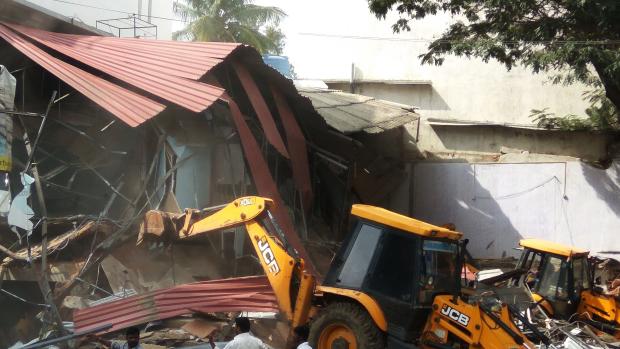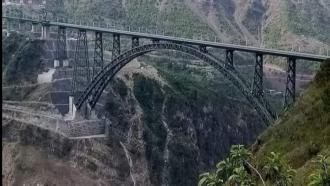
Photo : Vignesh Kamath / Research Matters
The whole world was in festive mode as many people were celebrating Christmas and many more were busy planning the New Year celebration. Unfortunately, happiness turned to horror within minutes, when a devastating tsunami destroyed the coastal areas of a dozen countries including India, Thailand, Indonesia, Maldives and Sri Lanka. It led to the death of close to 226,000 people, apart from the severe damage to resources. In the history of mankind, we have faced numerous disasters caused by natural hazards. However, we would be wrong if we project natural hazards as the lone culprit for such sudden mass destructions. We have a dark history of man-made disasters, one of the most notable examples being the atomic bombing of Hiroshima & Nagasaki during the World War II.
Disaster, as defined by the United Nations Office for Disaster Risk Reduction (UNISDR) is, “A serious disruption of the functioning of a community or a society involving widespread human, material, economic or environmental losses and impacts, which exceeds the ability of the affected community or society to cope, using its own resources”. Natural hazards like earthquake, flood, landslide, cyclone, tsunami and heat wave are the major events leading to disasters. Man- made disasters include nuclear and radiological emergencies, biological disasters like epidemic diseases and chemical disasters.
Unfortunately, the risk of facing disaster is higher in India. We are at a high risk of devastation by earthquake as more than 58.6 per cent of our landmass is prone to moderate and very high intensity earthquakes. We experience destructive flood every year and approximately 12% of our landmass is prone to flood and erosion. Although agriculture forms the backbone of our economy, more than 68% of agricultural land is affected by droughts. Cyclone and tsunamis are also a major cause of concern, as 5700 km of our coastline is prone to them. In the last two decades alone, we have lost millions of lives, livestock and plenty of other resources to the different disasters. The Gujarat earthquake on our 52nd republic day caused 13,805 deaths and affected 6.3 million peoples. The super cyclone of Odisha in 1999, the destructive tsunami in the year 2004 along the Indian coastline and the massive flood and landslides in Uttarakhand are the examples of some recent destructive disasters in India (www.ndma.gov.in). We have an unpleasant history of human- made disasters also. The Bhopal Gas tragedy in 1984, caused by toxic methyl isocyanate gas released due to negligence at a pesticide plant was one of the most devastating chemical hazards in history.
The choices we make and our handling of the environment decides our resilience or vulnerability to disasters. Climate change, unplanned expansion of urban areas, changed land use patterns and various biological and geological hazards are further increasing the risk of disasters. Rajat Subhra Chatterjee, a senior faculty of Geoscience & Geohazards Department and the Head of Disaster Management Science Department in Indian Institute of Remote Sensing (ISRO), Dehradun felt that although natural hazards are the main reason for the disasters in India, anthropogenic environmental degradation play their adverse impacts which need to be duly addressed by adopting sustainable development mechanism such as sustainable mining and usage of minerals, hydrocarbon and natural resources. Ecologists were at a consensus that human activities had a major role in the devastations caused by the Uttarakhand flood and landslide in 2013. A massive growth in unplanned construction activities to address the need of the rising tourism industry was identified as one of the leading causes for the destruction. An undisturbed ecosystem contributes to disaster risk reduction by providing natural protective barriers, like rivers and forests, and providing us resources to tackle the hazard situation.
We cannot stop disasters but could reduce the risks and the extent of sufferings they cause. The International strategy for disaster reduction emphasizes on shifting our attention to “disaster reduction” from “disaster responses” (www.unisdr.org). Disaster risk reduction includes management of disaster, reducing its severity (mitigation) and undertaking necessary preparations for survival during a disaster condition. It includes a systematic study to identify the causes of disasters, reducing the vulnerability of people and property, early warning for hazards and proper management of the ecosystem. It is our moral responsibility to support and participate in disaster management and reduction activities. There are various national and global initiatives for disaster reduction. In the interest of UN General Assembly, the “International Day for Disaster Reduction” is celebrated every year on 13th October since 1989, with a goal to promote awareness and ensure disaster reduction. This year’s goal for International Day for Disaster Reduction is “to reduce the number of affected people by disasters by 2030”. When asked about probable measures for disaster reduction in India, Dr. Prashant Kumar Champati ray, the group head of Geosciences and Disaster Management group in ISRO, Dehradun stressed on the importance of focus on key areas where intervention can really save life and property. “There is a need to differentiate between long term and short-term solutions. Out of the box thinking is required in the Indian context. We have to make strategies to promote development, with minimum intervention with the environment. It is possible and should be explored” he said. Efficient use of advanced technology is very important for disaster reduction. Early warning for various hazards is now possible. “For an efficient near real-time disaster reduction, space technology plays an important role in providing real-time to near real-time earth observation data and geospatially derived information about the disaster” informed Dr Chatterjee.
Fortunately, India is paying proper attention towards disaster management practices and has received global appreciation for being the first country to have a national plan for disaster risk reduction. The Disaster Management Act, 2005 laid down a strong foundation for disaster management practices and led to the formation of National Disaster Management Authority (NDMA) headed by the Prime Minister, State Disaster Management Authorities (SDMAs) headed by the respective state Chief Ministers and the District Disaster Management Authorities (DDMAs) headed by the District Collectors. The National Disaster Response Force (NDRF) provides specialized response in any kind of disaster situation. Dr. Prashant mentioned about the need for proper implementation of disaster management plans and growing need for research related to this field. “We have many plans under various programmes, but they need to be addressed in a comprehensive manner and there is a need to review all plans and programmes at the highest level. Although we have the research facilities, very few experts are available and research is not targeted towards disaster reduction. There is a need to shift the focus of experts as well as labs to take up research works that support disaster management.” he told. Although disaster reduction is everyone’s duty, public awareness regarding disaster reduction and management is still very poor in India. “It is necessary to spread awareness about disaster management through different ways like presentation of real life experiences at school level showing how prevention and preparedness can save life and property” signs off Dr. Prashant.

























